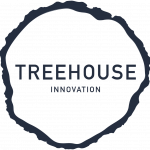Managing Partner Magazine – Innovation Cover Story
Can design thinking help law firms be more innovative?
Design thinking is new to legal services, but as innovation continues to rise as a top priority for law firms, the age of the ‘design thinking law firm’ may be upon us. “Empathise to Innovate” (Managing Partner 6/2015) by Adam Billing, explores how design thinking might help law firms create competitive advantage in the same way as their corporate counterparts before them.
“Empathise to Innovate – What MNCs can teach law firms about innovation”
– By Adam Billing
Fresh thinking from outside the legal sector will be needed to drive the next wave of growth in law firms. One approach that a growing number of corporates are using to drive innovation is design thinking. This is a way of working that puts empathy at the centre of the innovation process, encourages cross disciplinary collaboration and balances creativity with analytical rigour to ensure that great ideas don’t just get generated, but are also successfully implemented.
In many law firms, innovation has taken the form of ad-hoc solutions created in response to specific client demands or regulatory changes. These ‘spot innovations’ have value, yet they often don’t have a significant impact on the firm as a whole.
Other law firms have taken a more strategic, systemic approach to innovation. They are working hard to build genuine innovation cultures, where the process of identifying growth opportunities and quickly implementing solutions happens continuously as a fundamental part of the way the firm works. Today, most law firms are not yet set up to do this well, and it’s difficult to find examples of best practice in the sector.
Some forward-looking firms are beginning to search outside of the sector for new approaches to drive continuous innovation. While new to the legal sector, design thinking has helped to transform and invigorate some of the world’s most successful corporations today.
Design thinking
Design thinking is a human-centred approach to innovation used by some of the world’s most consistently innovative companies, including Google, Procter & Gamble and Apple.
It is human-centred because it starts with people and seeks to reveal meaningful insights into what they value and care about, in order to better understand how to innovate for them. It is fast paced, iterative and fiercely collaborative. It employs a wide creative and analytical toolset (including storytelling, visualisation, business modelling, rapid prototyping and structured experimentation) to develop solutions that create real value for the firm, its clients and its people….
Free download of the full article from Managing Partner Magazine below…

